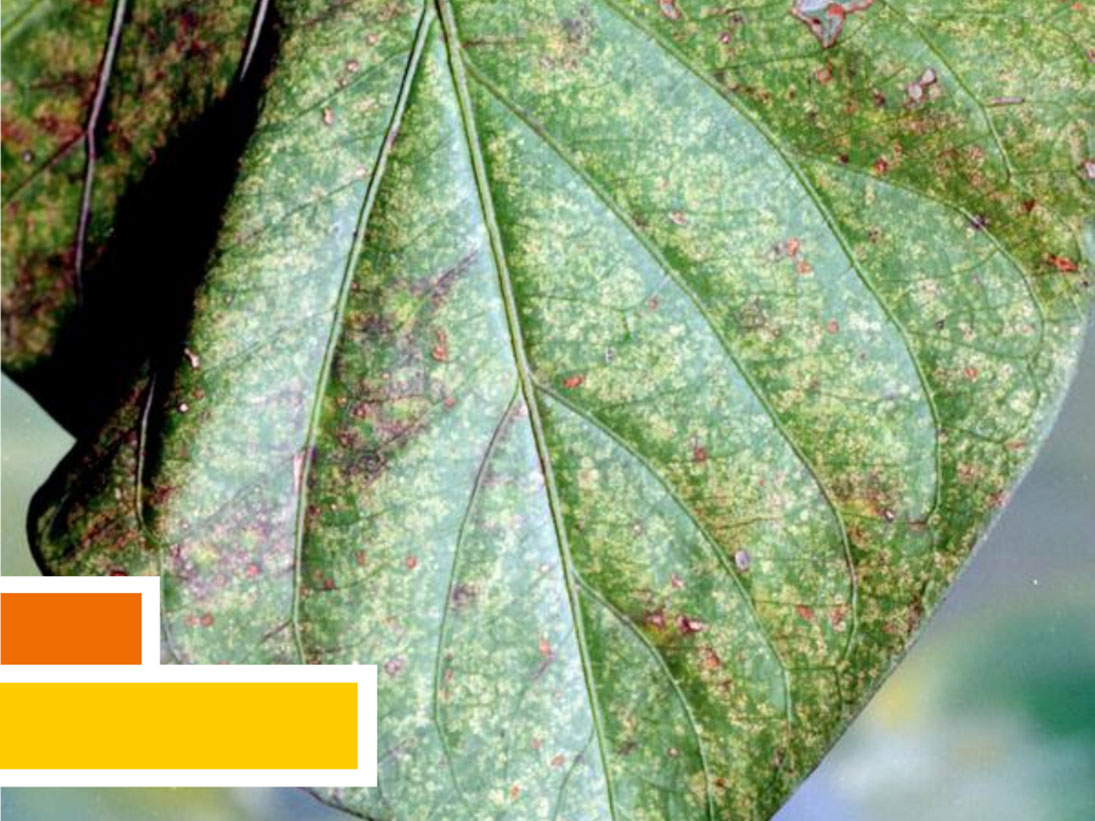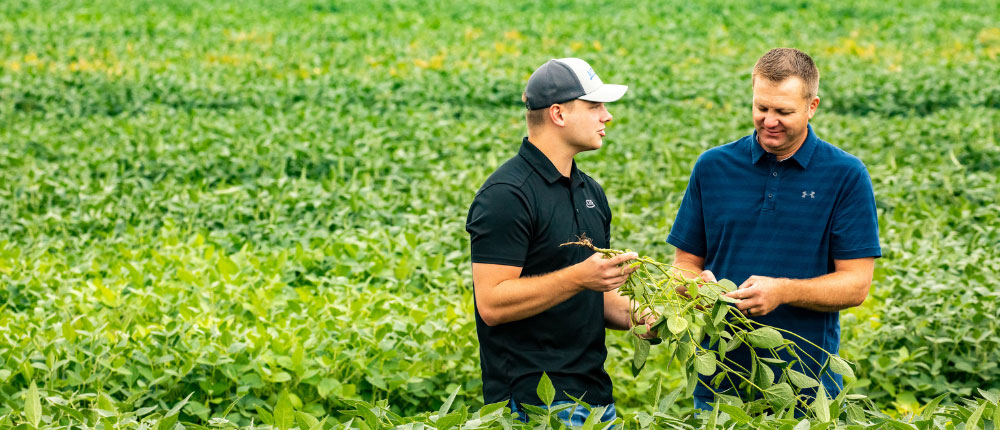When conditions are right, there is considerable risk for late-season infections that can escalate to economically damaging levels. When scouting, it is important to understand the perfect conditions for these insects, the impact on the plant, thresholds that require action, and steps that need to be taken.
Soybean Aphids

Photo Curtesy of Purdue University
Soybean aphids have piercing and sucking mouthpieces that consume the sap of the plant. When aphids are feeding on soybean plants, growth rates and pod size and amounts are reduced causing greater limitations to yield. Temperatures ranging between 75- and 80-degrees Fahrenheit provide perfect conditions for soybean aphids. Aphids prefer soybeans when the plant is stressed, for instance during a drought. During the described perfect conditions, a colony of aphids can double in size in as few as 1.3 days.
If average counts of soybean aphids exceed 250 per plant on more than 80 percent of the field with populations growing from day-to-day treatment needs to take place. Treatments can occur from vegetation through R5 (seed development while the pod is not full), but the plant yield can still be affected through early R6. Insecticides should be used at instructed rates to take control of all aphids in the field.
Spider Mites

Photo Curtesy of Colorado State University
Spider mites kill cells one by one in the plant, piercing individual cells and sucking out content which produces white and yellow spots or stippling on the underside of leaves. When spider mites are present, water loss from the plant becomes uncontrolled and photosynthesis in the plant is compromised. The entire leaf will turn yellow, brown, or coppery, and eventually drop off. Symptoms are often confused with symptoms of drought. Infestation of spider mites leads to reduced pod sets, fewer seeds, and smaller seed size.
Spider mites thrive in hot and dusty conditions. It is common to find them in fields adjacent to gravel roads or during a time of drought. When these conditions are present it is likely that the mites will reproduce in less than a week. Soybean plants are most susceptible to loss from R3 to R5. When identifying treatment options there are no thresholds to follow in corn or soybeans. Treatment should be explored if the field is infested, especially when heavy stippling occurs on lower leaves and is progressing into the middle canopy.
When taking control of soybean aphids and spider mites, Cerium Elite, Parachute II and Petrichor are all great partners in providing drift reduction and droplet retention to miticides and insecticides. Optimize your inputs with these control agents to get the best bang for your buck. To identify the best match for your tank mix, take a look at our crop protection.




